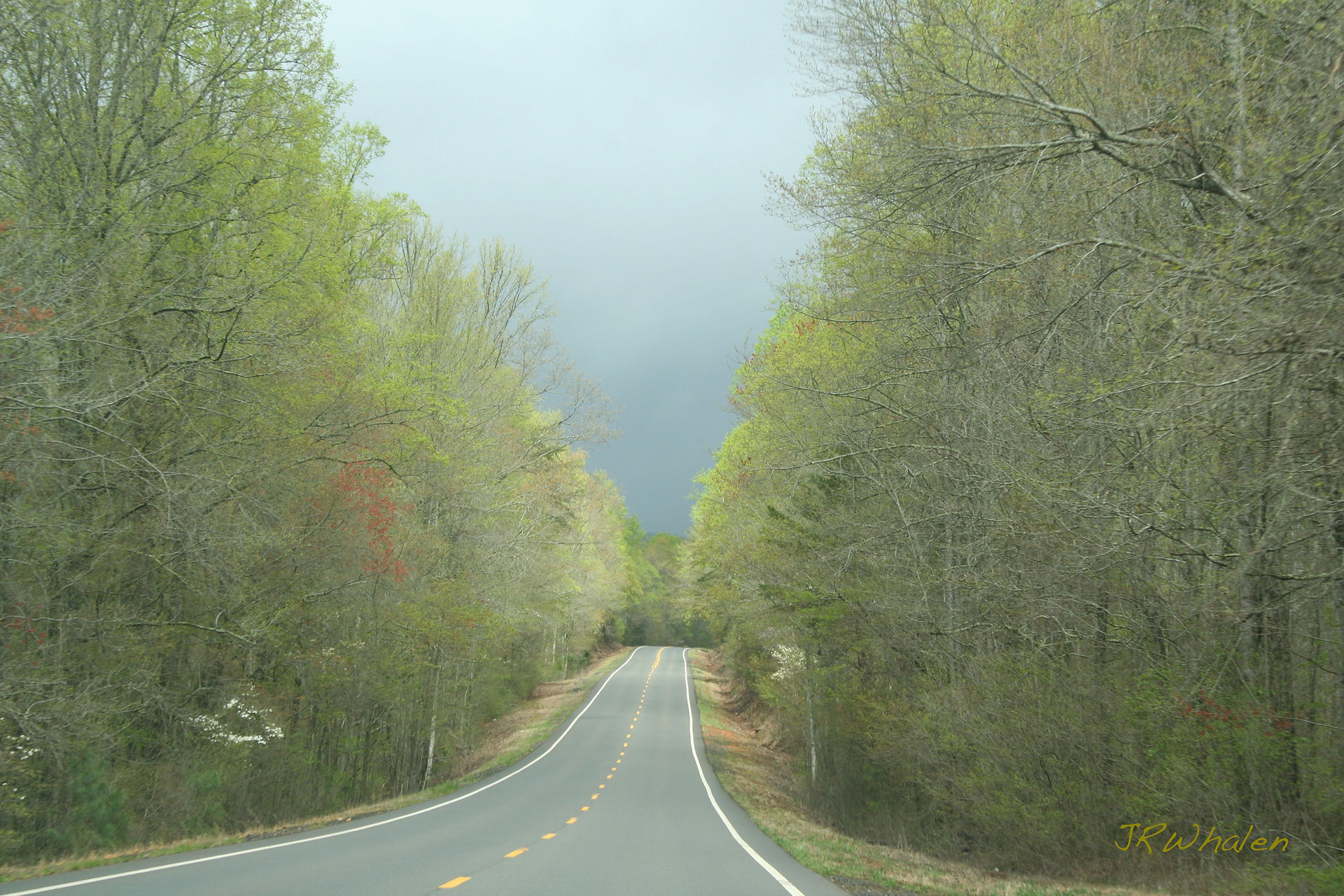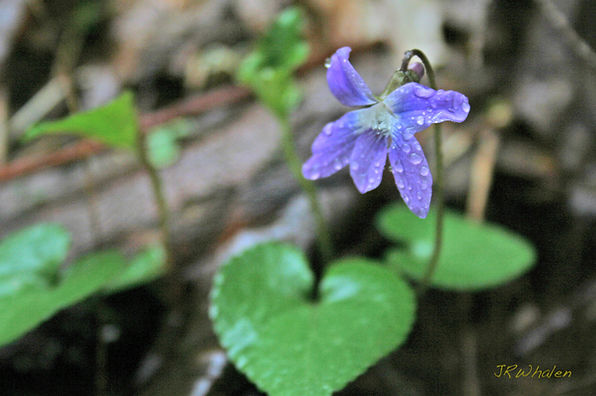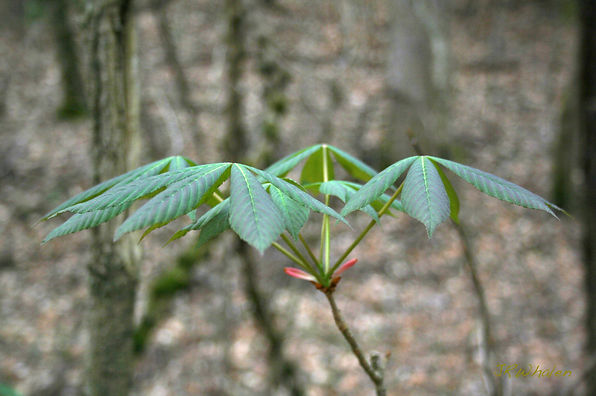
Appalachian
Treasure Hunt
Journaling Native Plants of Northeast Georgia
J. Whalen

March 1
March drives are often
"take-your-breath-away" experiences...
"It is one of those March days when the sun shines hot and the wind blows cold: when it's summer in the light and winter in the shade." Charles Dickens
***************************
Thirteen Things you need to know to BEGIN to Learn about Native Plants:
1. The five kingdoms of living things are:
2. All plants have two types of names, a ___________ name and a ______________ name.
3. The botanical name is written in what language?
4. A plant family is made up of plants that have similar ____________ or reproductive parts. The family name always ends in _____________.
5. The species name is a two part name. The first word is the genus and is always capitalized. The second word is the specific epithet and is never capitalized. An example is _____________ _____________.
6. Carl Linnaeus, born in Sweden, devised the __________________ system for naming plants in the 1700’s.
7. When a new native plant is found it is named using the ___________.
8. A native plant is one which could be found here before the _____________ arrived.
9. If a native plant develops a characteristic in nature that makes it different from the rest of its species, this is called a ____________.
10. If a breeder notices that some plants of a species have special characteristics, and he breeds those plants until he has a noticeably new type of plant, this new plant is called a _____________.
11. If a breeder crosses two different species to form a plant with some characteristics of both parent plants, this new plant is called a ________.
12. A plant that has escaped cultivation and continues to thrive and spread on its own is a _________________ plant.
13. An _____________ plant is a plant that has escaped cultivation and becomes a nuisance because it is very difficult to control.
J. Whalen, 2016
Answers:
1. Animals, plants, fungi, protists, bacteria (actually 2 families of bacteria!)
2. common, botanical
3. Latin
4. flowers, aceae (For example: Rosaceae)
5. Kalmia latifolia (mountain laurel)
6. binomial
7. ICBN (International Code of Botanical Nomenclature)
8. Europeans
9. Variety (for example, if a plant is found with variegation)
10. cultivar (The cultivar name is always enclosed in single quotation marks. For example: Ilex verticillata ‘Winter Red’)
11. hybrid (The hybrid name always uses an x between the two species which are crossed. For example: Viburnum x burkwoodii ‘Mohawk’)
12. naturalized
13 invasive
In the mountains of Northeast Georgia wildflower season starts in April. But in the Piedmont ("Foot of the Mountains") we begin to see bright spots of "Easter colors" all over the woodland floor in March. These tiny flowers need to absorb all the sunlight they possibly can before the tree canopy closes over. The native wildflowers that follow, can be found with sharp eyes this month at lower elevations. Amicalola Falls State Park and Elachee Nature Center in Gainesville are excellent spots to see these early bloomers.

March 2

March is the month, in this area, when winter turns to spring. Of our native trees, one of the first to show colorful blooms is the Eastern Redbud (Cercis canadensis, Fabaceae). Tiny flower buds open to cover the tree in pink.
March 3

March 3
Trailing Arbutus (Epigea repens, Ericaceae) was used for pioneer bouquets because of its beautiful color and sweet smell.
Amicalola Falls State Park

March 4
The lavender flowers above are Round-lobed Hepatica (Hepatica americana, Ranunculaceae). Sharp-lobed hepatica (Hepatica acutiloba, Ranunculaceae) has whiter blooms and sharper pointed leaves.
March 5

March 5
Start looking for the male pollen cones on local pines. Pines are wind pollinated so March winds will soon take pine pollen to the female cones and also to cars, porches, and anything else that is uncovered!

March 6
On a warm day in March, you may notice a haze of blue in a lawn in the neighborhood. You are probably seeing bluets blooming along with the lawn grass. Though the individual blooms are small, the over-all color is lovely, unless you are a lawn purist. Another species (Houstonia crasifolia, Rubiacae) with a red "eye" blooms in middle Georgia.

March 7
Rue Anemone (Thalictrum thalictroids, Ranunculaceae) Hall County

March 8
Wood Anemone (Anemone lancifolia, Ranunculaceae) is easy to confuse with Rue Anemone. Though the flowers are very similar, the leaves are different. As you can see, the genus name is not the same...so even though they are in the same family of flowers, they have many differences with a closer examination. (Hall County)

March 9
The very distinctive Trout Lily leaves have covered the ground for a while, but in March the beautiful yellow flowers open up and brighten the forest floor. They are the first of many favorites in the Lily family.

Trout Lily (Erythronium americanum, Liliaceae)
Lake Winfield Scott.

March 10
Robin's Plantain (Erigonium pulchellus, Asteraceae)
Robin's Plantain is the first of MANY wildflowers in the aster, or daisy, family. Even along the mountain trails this one starts opening as soon as the snow melts. (Duke's Creek Falls State Park)
March 11


Northeast Georgia has more than a dozen species of Trilliums! March is too early for all except this one. At
Amicalola Falls State Park they start pushing out of the ground in a carpet of "Toad Shade."
Toad Shade Trilliums
(Trillium cuniatum, Liliaceae)


March 12
Cutleaf Toothwort
Dentaria lacinata, Brassicaceae
Amicalola Falls State Park
A toothwort with more oval leaves is Dentaria diphylla, Brassicaceae.


March 13
Virginia Blue Bells are more common in Northwest Georgia but this one was found in Amicalola Falls State Park. These beautiful purple buds will soon open to pink and blue flowers.
(Mertensia virginica, Boraginaceae)

Carolina Spring Beauty
This one has wide lance-shaped leaves.
(Claytonia caroliniana, Portulacaceae)
Sosebee Cove
These tiny early-bloomers have been recorded as being visited by more than seventy different insects!

Virginia Spring Beauty
(Claytonia virginica, Portulacaceae) has narrow lance-shaped leaves.
Desota Falls State Park
March 14
Don't forget to look up occasionally to see the many varied native trees blooming with spring flowers. Trees in the birch family (Betulaceae) have interesting long catkins, the male flowers, which will open on warm days to scatter pollen all over female flowers and cars everywhere!
(Unicoi Lake Trail)

March 15
Unicoi State Park
Have you started your "Life List" yet? Birders keep a list of all the birds they spot...and after a lifetime of bird watching they have quite a long list. Start a "Life List" of wildfowers this spring, then when March gets here next year you can take your list, start looking again, and add a few more species. If you see any of the ones pictured here put them on your list, along with the botanical name. Add the date and place seen, and by October you will have a very useful tool when you start "wandering" again next March.

March 16
Bloodroot, as you might guess, has a deep redish brown sap in its roots. It was used medicinally by Native Americans, and pioneers fed it to sick mules. Take time to admire its BEAUTIFUL leaves. (Sanquinaria canadensis, Papaveraceae)
Lumpkin County

March 17
Silver Leaf Violets are our earliest blooming native violets. The Leaves are triangular shaped and are usually silvery between the veins. (Viola hastata, Violaceae) Union County

March 18
Fallen tree, winter vines, Pine needles, moss, and evergreen Mountain Laurel leaves. (Unicoi Lake Trail)

March 19
Even when the roadsides still look wintry, you can occasionally spot the big yellow flower clusters of a Sassafras tree. (Sassafras albidum, Lauraceae) Hall County
*********************
The Spring Equinox marks the moment the sun crosses the celestial equator, the imaginary line in the sky above the Earth's equator from south to north. This happens in Northeast Georgia on March 20 every year.
Length of day and night are equal now but the sun will gradually make a higher and higher arc in the sky every day
until the Summer Solstice.
*********************

March 20
White County, Boggs Creek
On cool, wet, shady banks you can find the densest collections of Sweet White Violets. They are our smallest spring violets, but seeing a large display of them is very impressive. (Viola blanda, Violaceae)



March 21

Tiny pale blue violets begin to appear toward the end of March. They are particularly hard to identify because violets occasionally hybridize. There are often small differences in leaves or stems or veins in the petals. Regardless, they are all in the Viola genus and the Violaceae family. (Sosebee Cove)

March 22
Hall County
If you spot a sweetgum tree right before it leafs out and flowers, you may catch yourself staring open-mouthed at the amazing configuration of last year's seedpods and this year's grape-like flower buds. (Liquidamber styraciflua, Hamamelidaceae) Hall County

March 23
Lumpkin County
A buckeye tree spreading its wings (leaves) in the spring is an early sign of warmer days coming. Come back in the fall to find shiny "buckeyes," and put one in your pocket for good luck!

March 24

The Georgia Native Plant Society (www.gnps.org) lists and describes 13 species of ferns native to Georgia. They grow in the shade along creek banks and are unfurling their "fiddle heads" by late March to start a new year above ground. (Tallulah Falls State Park)



March 25
There will be no Mayapple flowers until April, and no Mayapples until May. But watching the tiny "umbrellas" of foliage opening on the forest floor is a sight to see! (Podophyllum petalum, Berbericaceae) Lumpkin County

March 26
You're lucky if you catch one of these rare mottled blue and white violets blooming. (Viola palmata, forma striata, Violaceae) Amicalola Falls State Park

March 27
Long-spur violets (Viola rostrado, Violaceae) Helton Creek Falls, Union County


March 28
Blue Phlox (Phlox divaricata, Convolvulaceae)
Amicalola Falls State Park

All chickweeds have TINY white blooms and are often dismissed as "weeds". This species (Stellaria pubera, Caryophyllaceae) has the largest bloom, so is the "star" of this genus.

March 29
There's not much spring in the mountains yet, but I love the stories that this "still-life" tells: dead tree stump, shelf fungus tinted green with algae, moss on the stump, wet fallen leaves, pine needles, hickory nut shells, etc. etc.

March 30

The first native azalea to open up in the Northeast Georgia woodlands is the Piedmont Azalea (Rhododendron canescens, Ericaceae)

Shades of pale green on almost every tree now!

March 31
Mountain folks knew that just in time for Easter services they would see the blooms of their "sarviceberry" trees. Gardens on Green, Hall County (Amelanchier arborea, Rosaceae)
